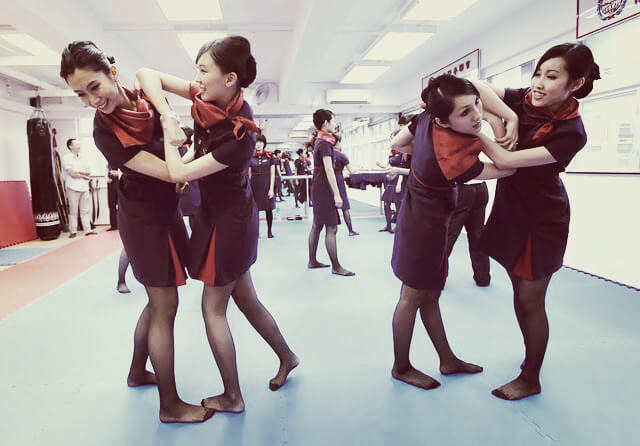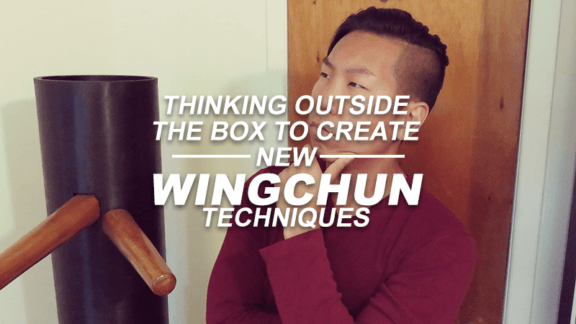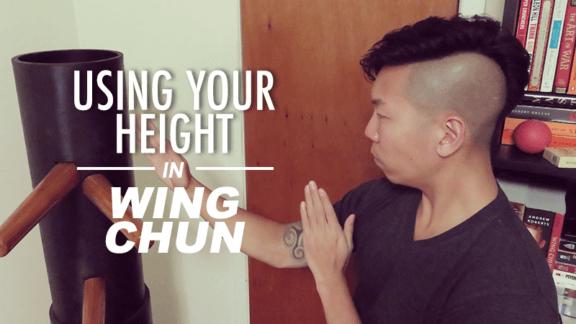All The Ways You Can Relax and Take Care of Your Shoulders for Wing Chun
Chi Sao, Tan Sau, Bong Sau, Gan Sau, Fook Sau, punching, and all any other moves that involve using our arms require the shoulder to be loose. Once your shoulders are relaxed, the rest of your body follows. Wing Chun becomes the most effective when we’re relaxed.

For many beginners, and even intermediate students of Wing Chun, keeping the shoulders relaxed is one of the hardest things to do. It’s a natural reaction to resist an attack by defending with force and strength. It takes a lot of training to overcome this bad habit but it’s definitely possible.
Here are 3 ways to train your shoulders to relax.
-
Drop your shoulders. If you’re naturally hunched over or have big shoulders, just drop them by reaching your hands towards the ground. You might feel some tension from your neck. The tension comes from the stretching of your neck.
This is something you can do anytime and anywhere. Once you feel yourself stiffening up while you’re walking down the street or when you’re sitting at the dinner table, or whenever you feel tense, drop your shoulders.
-
Stretch your shoulders. You can do this by going into Tan Sau and pulling your elbows towards your centerline with the opposite hand.
In addition to stretching your shoulders, you’re also conditioning your elbow to be closer to your centerline.
-
Be aware of your body. Of the three, this is the hardest to do because Wing Chun already requires doing multiple things at once and adding this to the list won’t make training easier. But if you can recognize what makes you tense up, you can use that knowledge to focus on figuring out what you can do to keep calm and relaxed when facing the situation.
For me, one thing I notice when I Chi Sao is that my right arm and shoulder are much tenser than my left side’s and I believe the reason for that is because I’m right handed and I usually begin rolling with my right arm. During intense Chi Sao sessions, it’s my opponent that tells me to loosen up because they can feel my arms stiffen up before I do and they take advantage of this. So to adapt, I become aggressive by striking instead of waiting to defend when I feel myself getting stiff. It’s not always a good tactic to cover myself with a frenzy of strikes but it helps condition myself to react.
Ultimately, the benefits of this training is to keep us relaxed. Remaining calm and adapting to challenging situations keeps us fluid and from not overreacting when facing new challenges, whether in Wing Chun or in life.
Tan Sau, Bong Sau, and your Scapula!
The scapula is vital to our shoulders and if you were like me, you’re probably unaware of how important it is to shoulder movement.
I’ve been recovering from a shoulder injury since October and have been going to physical therapy (sports medicine) to work on it.
During my first session, while going through the motions of using my shoulders to diagnosis the problem, my physical therapist (Eric) said I “hike my shoulders” when I use them. This looks like I’m bringing my shoulders to my ears when I’m raising them. Eric says that is because I wasn’t using my scapula to support my shoulders and instead, was using my traps (the muscles between the neck and shoulder).
This made me realized that I did the same when I rolled from Tan Sau to Bong Sau in Chi Sao. I would rely on my traps to roll and this would fatigue my shoulders. I decided to try using my techniques with focus on relying on my scapula.
In November, I went to class to try it out and also to give my shoulders a stress test to see if I can return to class. I didn’t try to go all out and instead focused just on my technique. This is what I discovered:
- Using the scapula put less strain on my shoulders and I didn’t feel the same heaviness and fatigue from when I relied on my traps.
- I focused a lot more on my structure. The height of my Tan Sau and Bong Sau was higher when I used my traps but now with only my scapula, the position is much lower, so I need proper structure to defend properly.
- My sensitivity improved and surprisingly made it easier for me to spot openings during Chi Sao.
This worked for me but I’m not sure if it will work for you. But! Try focusing on using your scapula the next time you’re doing Chi Sao or using techniques that requires your shoulders and let me know if it helps! Very curious!
What should I do when my shoulders are sore from too much Chi Sao
How to keep your shoulders relaxed in Wing Chun
Body Maintenance
There are two types of body maintenance: staying fit and preventing damage.
Staying fit means exercising and making sure our body is sharp and ready to train or practice Wing Chun.
Preventing damage means taking care of the body and addressing any issues you have now.
If you’re doing martial arts, I consider you an athlete because we use our bodies differently than normal people.
I believe taking care of the body should be higher priority than training through pain because it can make things worse in the long run.
I recommend physical therapy for any current muscle or joint damage especially if you’ve been dealing with them for a while. Look for physical therapists in the sports science field because they work with athletes and know how to treat damages for high impact and intense physical activities.
Without a well maintained body, you can’t train properly, so take care of it!


